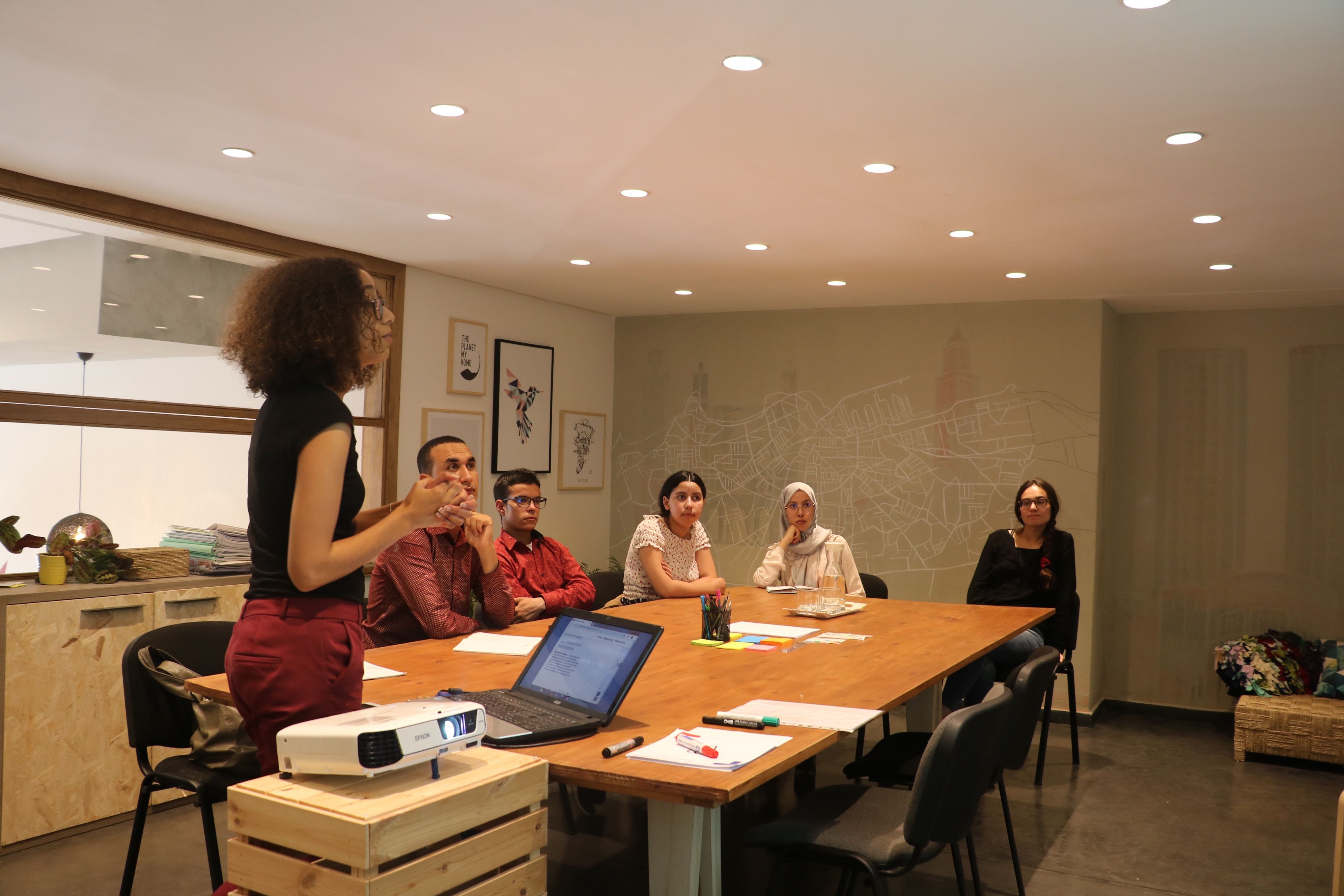
In today's fast-paced and competitive business world, companies are constantly looking for ways to boost employee morale and increase productivity. One highly effective strategy that has gained significant attention in recent years is employee recognition benefits. From monetary rewards to public praise, providing employees with the recognition they deserve can have a profound impact on their motivation and job satisfaction.
Employee recognition benefits encompass a wide range of initiatives designed to acknowledge and appreciate the hard work and achievements of individuals within an organization. Gone are the days when a simple pat on the back would suffice. Employers now understand the importance of going above and beyond to show their employees that their contributions are valued. This not only fosters a positive work environment but also encourages employees to strive for excellence and take pride in their work.
We will delve deeper into the world of employee recognition benefits, exploring the various types of rewards and incentives that companies are offering to their employees. We will discuss the numerous advantages of implementing these programs, such as increased employee engagement, reduced turnover rates, and improved overall company culture. Whether you're an employer looking to boost your team's morale or an employee seeking validation for your hard work, this blog is your ultimate guide to understanding the power of employee recognition benefits. So, grab a cup of coffee and join us as we embark on this exciting journey of appreciation and motivation in the workplace.
24 Employee Recognition Benefits

1. Boosted Morale: The Power of Appreciation
When employees are recognized for their hard work, they feel valued and appreciated. This boosts their morale and creates a positive work environment.
2. Increased Productivity: The Motivation Factor
Recognition for a job well done motivates employees to continue giving their best effort. This leads to increased productivity and higher quality work.
3. Enhanced Employee Engagement: A Sense of Belonging
Recognition creates a sense of belonging among employees. It encourages them to actively participate and engage with their work and the company as a whole.
4. Improved Retention: Keeping Your Top Talent
Recognizing and appreciating employees' efforts helps build loyalty. Employees who feel valued are more likely to stay with the company, reducing turnover rates.
5. Strengthened Team Spirit: A Sense of Camaraderie
Employee recognition fosters a sense of camaraderie among team members. This strengthens teamwork and collaboration, improving overall team performance.
6. Reinforced Company Culture: Living the Values
Recognition programs reinforce company values and culture by acknowledging behaviors that align with organizational goals. This helps shape a positive work environment.
7. Enhanced Employee Well-being: The Happiness Factor
Recognition positively impacts employee well-being. Feeling valued and appreciated contributes to higher job satisfaction and overall happiness.
8. Increased Employee Loyalty: Going the Extra Mile
Recognition programs encourage employees to go above and beyond their responsibilities. This fosters a culture of dedication and loyalty.
9. Improved Employee Confidence: A Boost in Self-worth
Recognition validates employees' skills and accomplishments, boosting their self-confidence. This leads to increased job satisfaction and improved performance.
10. Encouraged Innovation: Unlocking Creativity
Recognition programs stimulate innovation by encouraging employees to think outside the box. Acknowledging creative ideas inspires a culture of continuous improvement.
11. Strengthened Leadership: Leading by Example
Recognizing employees' efforts sets a positive example for leadership. It encourages managers to be more attentive and appreciative of their team members.
12. Increased Employee Happiness: A Positive Work Environment
Recognition contributes to a positive work environment, fostering happiness among employees. This leads to higher levels of engagement and productivity.
13. Improved Employee Well-being: Work-Life Balance
Recognition programs can include benefits related to work-life balance, such as flexible scheduling or additional time off. This enhances employees' well-being and satisfaction.
14. Enhanced Employee Development: Investing in Growth
Recognition can be tied to opportunities for professional growth and development. This motivates employees to continuously improve their skills and knowledge.
15. Strengthened Peer Relationships: A Supportive Network
Recognition programs that involve peer-to-peer appreciation build stronger relationships among colleagues. This creates a supportive network within the organization.
16. Increased Innovation: Creative Problem Solving
Recognition encourages employees to think creatively when solving problems. It fosters a culture of innovation and empowers employees to find unique solutions.
17. Improved Employee Health: Stress Reduction
Recognition programs that prioritize employee well-being can contribute to stress reduction. This leads to improved physical and mental health among employees.
18. Enhanced Employee Satisfaction: Meeting Personal Needs
Recognition programs that offer personalized benefits cater to employees' individual needs and preferences. This increases overall job satisfaction.
19. Strengthened Employee-Manager Relationships: Trust and Respect
Recognition programs build trust and respect between employees and their managers. This creates a positive working relationship and improves communication.
20. Increased Employee Motivation: A Drive to Succeed
Recognition motivates employees to achieve their goals and strive for excellence. It fuels their drive to succeed and surpass expectations.
21. Improved Employee Collaboration: Breaking Down Silos
Recognition programs that promote collaboration across departments break down silos. This fosters knowledge-sharing and improves overall organizational effectiveness.
22. Enhanced Employer Brand: Attracting Top Talent
Recognition programs contribute to a positive employer brand. This attracts top talent and positions the company as an employer of choice.
23. Increased Employee Engagement: Going the Extra Mile
Recognition programs that reward exceptional performance encourage employees to go the extra mile. This leads to increased engagement and improved outcomes.
24. Strengthened Employee Wellness: Promoting Health
Recognition programs that prioritize employee wellness, such as gym memberships or wellness initiatives, promote a healthy lifestyle and overall well-being.
Employee recognition benefits play a crucial role in creating a positive work environment, boosting morale, and increasing productivity. Implementing a comprehensive recognition program can lead to enhanced employee engagement, improved retention rates, and a stronger company culture. By investing in recognizing and appreciating employees, organizations can foster a motivated and dedicated workforce that contributes to long-term success.
Related Reading
• How To Improve Employee Morale • Why Is Employee Recognition Important • How To Motivate Your Team • Benefits Of Employee Recognition • How To Improve Employee Satisfaction • Culture Of Recognition In The Workplace • Employee Recognition Statistics • Best Practices For Employee Recognition • Employee Anniversary Recognition
Formal vs Informal Employee Recognition Methods
![]()
Employee recognition is a powerful tool that can boost morale, productivity, and overall employee satisfaction. When it comes to recognizing employees, there are two main approaches: formal and informal methods. While both have their merits, it is the combination of both that truly maximizes their impact.
Formal Employee Recognition Methods: The Gold Standard
Formal employee recognition methods are typically structured programs or initiatives implemented by organizations to acknowledge and reward outstanding employee performance. These programs often have specific criteria and guidelines, ensuring fairness and consistency. Some common examples of formal recognition methods include:
1. Employee of the Month/Quarter/Year
This is perhaps the most well-known formal recognition program. It involves selecting one exceptional employee who has demonstrated outstanding performance, leadership, or other desired qualities.
2. Performance-based bonuses
Financial incentives are powerful motivators for employees. By tying recognition to performance, organizations can encourage employees to strive for excellence.
3. Awards and certificates
Recognizing employees through tangible awards or certificates can provide a sense of accomplishment and pride. These can be given for various achievements, such as meeting specific targets or completing projects successfully.
Informal Employee Recognition Methods: The Personal Touch
Informal employee recognition methods, on the other hand, are more spontaneous and personal. They involve acknowledging employees on a day-to-day basis for their efforts, contributions, or positive behavior. These methods may not have specific guidelines or criteria and can be initiated by anyone within the organization. Here are a few examples of informal recognition methods:
1. Verbal praise
A simple "thank you" or a genuine compliment can go a long way in making employees feel valued and appreciated. Taking the time to acknowledge their hard work can boost morale and motivation.
2. Public recognition
Recognizing employees in team meetings, company-wide emails, or newsletters allows their accomplishments to be celebrated by their peers. This not only boosts their self-esteem but also inspires others to strive for similar recognition.
3. Small gestures
Sometimes, it's the little things that make a big difference. Sending a personalized note, treating an employee to lunch, or surprising them with a small gift can make them feel appreciated and valued.
Why a Combination of Both is Important: Striking the Balance
While formal recognition methods provide structure and visibility, informal methods add a personal touch that can make employees feel truly valued and recognized for their unique contributions. A combination of both formal and informal methods is important for several reasons:
1. Inclusivity
Formal recognition programs often have specific criteria, which may exclude some employees who may not fit within those parameters. Informal methods ensure that every employee has the opportunity to be recognized and appreciated, regardless of their role or performance metrics.
2. Timeliness
Formal recognition programs may have set intervals or timelines for acknowledging outstanding performance. Informal methods allow for real-time recognition, ensuring that employees feel appreciated in the moment and don't have to wait for a formal program to receive recognition.
3. Flexibility
Informal methods allow for creativity and spontaneity, which can be more adaptable to different situations or circumstances. They provide an opportunity for managers and colleagues to tailor their recognition efforts to the individual preferences and needs of each employee.
Incorporating a combination of formal and informal methods ensures that employee recognition is comprehensive, inclusive, and impactful. It allows organizations to create a culture of appreciation and recognition that motivates employees, boosts morale, and ultimately contributes to their overall satisfaction and success. So, let's embrace the power of recognition and create an environment where employees feel valued and acknowledged for their hard work and dedication.
Creating A Positive Company Culture With Employee Recognition

Employee recognition plays a crucial role in enhancing overall workplace morale and creating a positive company culture. By acknowledging and appreciating employees' efforts and achievements, organizations can foster a sense of value, motivation, and loyalty among their workforce. Let's dive into the various ways in which employee recognition benefits contribute to these positive outcomes.
1. Boosts Employee Engagement and Productivity
Employee recognition benefits act as powerful motivators, driving employees to go above and beyond their regular duties. When employees feel recognized and appreciated for their hard work, they are more likely to feel a sense of pride and satisfaction in their job. This, in turn, leads to increased engagement and productivity. By creating a culture of recognition, companies can harness the full potential of their employees and encourage them to perform at their best.
2. Improves Employee Retention and Loyalty
In today's competitive job market, retaining top talent is essential for an organization's success. Employee recognition plays a critical role in this regard. When employees feel valued and appreciated, they are more likely to stay with the company for the long term. Recognition benefits such as awards, bonuses, and public appreciation can help foster a sense of loyalty and commitment to the organization, reducing turnover rates and saving recruitment costs.
3. Enhances Team Collaboration and Camaraderie
Employee recognition benefits not only uplift individual employees but also foster a sense of unity and camaraderie within teams. When employees see their colleagues being recognized and rewarded, it creates a positive environment where everyone strives to excel. This promotes healthy competition, collaboration, and teamwork, leading to improved overall performance.
4. Boosts Employee Morale and Job Satisfaction
Receiving recognition for their efforts and accomplishments can significantly impact an employee's morale and job satisfaction. When employees feel valued and acknowledged, they are more likely to enjoy their work and feel a sense of purpose. This positive emotional connection to their job increases job satisfaction and overall happiness, leading to higher employee morale and well-being.
5. Reinforces Desired Behaviors and Organizational Values
Employee recognition benefits serve as a powerful tool for reinforcing desired behaviors and organizational values. By recognizing and rewarding employees who exemplify the company's core values, organizations can shape and reinforce a positive company culture. This, in turn, encourages other employees to emulate these behaviors, creating a ripple effect throughout the organization.
Employee recognition benefits play a vital role in enhancing workplace morale and creating a positive company culture. By boosting employee engagement, improving retention rates, fostering teamwork, boosting morale, and reinforcing desired behaviors, organizations can create a thriving work environment where employees feel valued, motivated, and proud to be a part of the team.
How Personalized Recognition Efforts Can Be More Meaningful

Employee recognition is an essential aspect of any successful organization. It not only boosts morale but also improves productivity and employee engagement. Generic recognition efforts can often fall flat, failing to truly resonate with individual employees. To make recognition more meaningful, organizations need to personalize their efforts. In this section, we will explore strategies that organizations can use to achieve this personalization, ultimately making employees feel truly valued.
1. Get to Know Your Employees
To personalize recognition efforts, organizations must first make an effort to understand their employees on a deeper level. This involves more than just knowing their names and job titles. Take the time to learn about their interests, hobbies, and personal achievements. By getting to know your employees as individuals, you can tailor recognition efforts to align with their specific preferences and passions.
2. Listen and Observe
Recognition doesn't always have to be grand gestures. Often, small and thoughtful acts can have a tremendous impact. Pay attention to your employees' daily work, achievements, and challenges. Listen to them when they speak, and observe their actions. When you notice an employee going above and beyond or demonstrating exceptional skills, take the opportunity to acknowledge and appreciate their efforts in a personalized way.
3. Tailor Rewards and Incentives
One size does not fit all when it comes to recognition rewards and incentives. To make them more meaningful, organizations should offer a range of options that cater to different employee preferences. This could include personalized gifts, experiences, or even additional training opportunities tailored to individual interests and career goals. By providing choices, employees are more likely to feel valued and appreciated.
4. Celebrate Milestones and Achievements
Recognizing and celebrating significant milestones and achievements is a powerful way to personalize recognition efforts. Whether it's a work anniversary, a promotion, or completing a challenging project, take the time to acknowledge these accomplishments in a meaningful way. Consider personalized messages, public recognition, or even small celebrations tailored to the individual's preferences.
5. Foster a Culture of Peer Recognition
Personalized recognition doesn't always have to come from the top down. Encouraging peer-to-peer recognition creates a culture of appreciation and allows employees to recognize and celebrate each other's achievements. Provide platforms or channels for employees to share their recognition stories and give shoutouts to their colleagues. This not only fosters a sense of community but also ensures that recognition efforts are meaningful and relevant.
Personalized recognition efforts can make a significant impact on employee morale, productivity, and overall satisfaction. By getting to know employees on a personal level, observing and listening to their achievements, tailoring rewards and incentives, celebrating milestones, and fostering a culture of peer recognition, organizations can create a truly personalized recognition program that makes employees feel valued and appreciated. It's the little things that count, and by taking the time to make recognition personal, organizations can create a positive and engaging work environment.
Potential Consquences of Neglecting Employee Recognition

Employee recognition plays a crucial role in fostering a positive work environment and creating a sense of appreciation among employees. Neglecting employee recognition can have significant consequences, including decreased job satisfaction and higher turnover rates. Let's dive into each of these topics to understand the potential impact on an organization.
1. Decreased Job Satisfaction: The Recognition Gap
When employees feel undervalued or underappreciated, their job satisfaction tends to decline. Without proper recognition for their hard work and achievements, employees may begin to question their worth and contribution to the organization. This can lead to a decrease in morale, motivation, and overall job satisfaction.
Employers who fail to prioritize employee recognition create what I like to call the "recognition gap." This gap represents the disparity between the effort put in by employees and the acknowledgment received. As the gap widens, employees become more disengaged, demotivated, and dissatisfied with their work. This can negatively impact their productivity and overall performance.
2. Higher Turnover Rates: Retention Challenges
Employee turnover is a costly issue for any organization. Neglecting employee recognition can contribute to higher turnover rates, creating a revolving door of talent. When employees feel unappreciated or undervalued, they are more likely to seek opportunities elsewhere where they believe their efforts will be recognized and rewarded.
High turnover rates not only result in the loss of skilled employees but also increase recruitment and training costs. It disrupts team dynamics and can have a detrimental impact on organizational productivity and culture. Frequent turnover can harm an organization's reputation, making it challenging to attract top talent in the future.
3. Impact on Organizational Culture: A Toxic Cycle
Employee recognition is closely tied to the overall organizational culture. When recognition is neglected, it can create a negative cycle within the organization. Employees who do not receive recognition may become disengaged, leading to decreased productivity and quality of work. This, in turn, affects the entire team, fostering a culture of mediocrity and disengagement.
A toxic work culture can have far-reaching consequences, including poor teamwork, increased conflicts, and reduced collaboration. It can also impede communication and hinder innovation and creativity. Ultimately, neglecting employee recognition can erode the foundation of a positive organizational culture and hinder long-term success.
Neglecting employee recognition can have severe consequences for an organization. It can result in decreased job satisfaction, higher turnover rates, and a toxic work culture. To foster a positive work environment and retain top talent, organizations must prioritize employee recognition and create a culture of appreciation. By acknowledging and celebrating employee contributions, organizations can boost job satisfaction, reduce turnover, and build a strong and thriving workforce.
How Employee Recognition Ties Into Talent Management and Retention

Creating a culture of employee recognition within an organization is a critical component of talent management and retention strategies. By acknowledging and appreciating the efforts and achievements of employees, companies can create a positive work environment that fosters employee engagement, productivity, and loyalty. We will explore the ways in which employee recognition benefits tie into broader talent management and retention strategies, and how they contribute to long-term organizational success.
Boosting Employee Engagement and Productivity
Employee recognition benefits play a significant role in boosting employee engagement and productivity. When employees are recognized and rewarded for their hard work and contributions, it makes them feel valued and appreciated. This sense of recognition and appreciation motivates them to continue performing at their best, leading to increased levels of productivity.
Studies have shown that engaged employees are more likely to go above and beyond their job responsibilities and are more committed to the organization's goals and objectives. By implementing employee recognition programs and benefits, organizations can create a culture that encourages higher levels of engagement and productivity.
Enhancing Employee Morale and Satisfaction
Employee recognition benefits also have a direct impact on employee morale and satisfaction. When employees feel recognized and appreciated, it boosts their morale and enhances their overall job satisfaction. Recognition serves as a form of validation for their efforts and hard work, which in turn leads to increased job satisfaction and a sense of personal fulfillment.
Satisfied employees are more likely to stay with the organization for the long term and are less likely to seek employment elsewhere. By providing employee recognition benefits, organizations can create a positive work environment that fosters employee morale and satisfaction, leading to higher levels of employee retention.
Promoting a Positive Company Culture
Employee recognition benefits are instrumental in promoting a positive company culture. When employees are recognized and rewarded for their achievements, it creates a culture of appreciation and celebration within the organization. This positive culture enhances teamwork, collaboration, and mutual respect among employees.
It also encourages a healthy competition where employees strive to achieve their best and be recognized for their efforts. A positive company culture built on employee recognition benefits attracts top talent and helps in retaining the best employees. It also creates a sense of pride and loyalty towards the organization, ultimately contributing to long-term organizational success.
Fostering Employee Loyalty and Retention
Employee recognition benefits are a powerful tool in fostering employee loyalty and retention. When employees feel valued and appreciated, they are more likely to develop a sense of loyalty towards the organization. They are also more likely to stay with the organization for the long term, reducing turnover rates and associated costs. By implementing employee recognition programs and benefits, organizations create a bond of trust and loyalty with their employees. This bond becomes a powerful motivator for employees to remain committed to the organization and its goals, contributing to long-term organizational success.
Employee recognition benefits are integral to talent management and retention strategies. By boosting employee engagement and productivity, enhancing morale and satisfaction, promoting a positive company culture, and fostering employee loyalty and retention, organizations can create a workplace environment that drives long-term organizational success. Implementing employee recognition programs and benefits not only makes employees feel valued and appreciated but also serves as a powerful tool for attracting and retaining top talent.
Non-Monetary Forms of Recognition

Employee recognition is a crucial aspect of creating a positive work culture and motivating employees. While traditional monetary incentives like bonuses and raises have their place, non-monetary forms of recognition can be just as, if not more, powerful in motivating employees. Let's explore the benefits and impact of verbal praise, written commendations, and public acknowledgment in comparison to monetary incentives.
Verbal Praise: The Fuel to Ignite Motivation
One of the simplest yet most effective ways to recognize an employee's achievements is through verbal praise. A well-timed and sincere "Great job!" or "I appreciate your hard work" can go a long way in boosting morale and inspiring employees to reach new heights. Verbal praise provides immediate feedback, making employees feel valued and acknowledged for their efforts. It also fosters a positive atmosphere, as it can be given publicly or privately, further enhancing employee engagement and satisfaction.
Written Commendations: Documentation of Excellence
While verbal praise is essential, written commendations add a layer of permanence and significance to employee recognition. A personalized thank-you note, a letter of appreciation, or a formal commendation can make employees feel truly valued and recognized for their contributions. These written gestures serve as tangible evidence of an employee's achievements, making them feel proud of their work. Written commendations can be shared with other team members, creating a ripple effect of motivation and inspiring others to strive for excellence.
Public Acknowledgment: Fueling a Sense of Belonging
Public acknowledgment is a powerful tool to create a sense of belonging and pride within an organization. Recognizing an employee's achievements in front of their peers, whether through company-wide announcements, team meetings, or newsletters, not only celebrates their successes but also reinforces positive behavior and performance. Public acknowledgment not only serves as a powerful motivator but also strengthens team bonds and encourages a culture of recognition and support.
Monetary Incentives: The Extra Boost
While non-monetary forms of recognition are essential, it would be remiss not to acknowledge the impact of monetary incentives. Bonuses, raises, and other financial rewards can provide employees with a tangible representation of their hard work and achievements. These incentives can serve as a powerful motivator, especially when tied to specific goals or performance metrics. It's important to note that monetary incentives alone may not be sustainable, as they might not foster a long-lasting sense of motivation or emotional connection with the organization.
Finding the Right Balance
To create a comprehensive recognition program, organizations must strike a balance between non-monetary and monetary incentives. By combining verbal praise, written commendations, and public acknowledgment with occasional monetary rewards, companies can maximize the motivational impact on their employees. Every employee is unique, and a well-rounded recognition program that incorporates both non-monetary and monetary incentives can cater to different preferences and needs.
While monetary incentives have their merits, non-monetary forms of recognition play a critical role in motivating employees. Verbal praise, written commendations, and public acknowledgment foster a positive work environment, boost morale, and inspire employees to excel. By embracing a holistic approach to recognition that encompasses both non-monetary and monetary incentives, organizations can create a culture of appreciation and engagement that drives long-term success.
Best Practices for Implementing An Effective Employee Recognition Program
When it comes to maximizing employee potential and boosting overall satisfaction, an effective employee recognition program is essential. It's not enough to simply roll out a program and hope for the best. To truly unleash the power of recognition, you need to follow best practices that will set clear objectives, measure impact, and ultimately create a culture of appreciation. In this section, we will explore the key components of a successful employee recognition program, from goal setting to evaluation.
1. Clear Objectives: The Foundation for Success
To start off on the right foot, it's crucial to establish clear objectives for your employee recognition program. What do you hope to achieve? Do you want to increase employee engagement, improve performance, or enhance satisfaction? By defining your goals from the outset, you can tailor your program to address specific areas of improvement and align it with your company's overall objectives. This clarity will also provide a benchmark for measuring success later on.
2. Tailored Rewards: Finding What Motivates Your Employees
Not all employees are motivated by the same rewards. Some may prefer financial incentives, while others may value public recognition or additional time off. To ensure that your recognition program resonates with your workforce, it's important to offer a range of rewards that appeal to different personalities and preferences. Conduct surveys or hold focus groups to gather feedback and insights on what motivates your employees the most. This way, you can customize your recognition program to meet their individual needs and preferences.
3. Timely Recognition: Seizing the Moment
Recognition loses its impact if it's not timely. Imagine completing a challenging project and receiving praise six months later—it just doesn't have the same effect. To maximize the positive impact of recognition, it should be delivered promptly, ideally within a day or two of the achievement. This not only reinforces the desired behavior but also shows that you are paying attention and appreciate the efforts of your employees.
4. Peer-to-Peer Recognition: Harnessing the Power of Colleague Support
While top-down recognition is crucial, peer-to-peer recognition can be equally powerful. Encouraging employees to recognize and appreciate their colleagues fosters a positive and supportive work environment. It also spreads the responsibility of recognition throughout the organization, ensuring that accomplishments are acknowledged from various perspectives. By facilitating peer-to-peer recognition, you are creating a culture of appreciation that goes beyond formal channels and encourages collaboration and camaraderie.
5. Measurement and Evaluation: Assessing Impact
To gauge the effectiveness of your employee recognition program, you need to measure its impact on both employee performance and satisfaction. This can be done through surveys, performance metrics, and even focus groups. By collecting data and soliciting feedback, you can identify areas of success and areas that may need improvement. Use this information to make adjustments and refine your program over time, ensuring that it continues to resonate with your employees and drive positive results.
6. Continuous Improvement: Keeping Recognition Fresh
The key to a successful employee recognition program is continuous improvement. To maintain its impact and relevance, it's important to review and enhance your program regularly. Stay up to date with industry trends and best practices, and seek feedback from your employees to identify areas for improvement. By continuously evolving your program, you can keep recognition fresh and exciting, ensuring that it remains a powerful tool for motivating and engaging your workforce.
Implementing an effective employee recognition program requires careful planning, customization, and ongoing evaluation. By setting clear objectives, tailoring rewards, delivering timely recognition, fostering peer-to-peer appreciation, measuring impact, and continuously improving your program, you can create a culture of recognition that unlocks the full potential of your employees and drives overall satisfaction. So don't wait—start recognizing and appreciating your employees today, and watch the positive impact unfold.
Related Reading
• Employee Recognition Awards • Employee Recognition Examples • Employee Rewards And Recognition • Employee Recognition Letter • Employee Recognition Day • Employee Rewards Examples • Employee Rewards And Recognition Program Examples • Creative Employee Recognition Ideas • Employee Recognition Programs Examples • Recognition Examples For Employees • Examples Of Employee Recognition Awards • Employee Recognition Program Names • Types Of Employee Recognition • Employee Recognition Survey Questions • Employee Recognition Criteria • Employee Recognition Gifts • Employee Recognition Wall Ideas • Employee Recognition Gifts for Years of Service • Employee Recognition Points System • Virtual Employee Recognition Ideas
Challenges You May Face When Implementing An Employee Recognition Program

Recognizing the efforts and achievements of employees is crucial for maintaining a motivated and engaged workforce. Employee recognition programs serve as a powerful tool for boosting morale, promoting productivity, and reducing turnover. Implementing these programs can come with its own set of challenges. Let's take a closer look at some of these challenges and explore how organizations can overcome them to ensure the success of their employee recognition initiatives.
1. Lack of Leadership Support:
One of the primary challenges organizations may face when implementing employee recognition programs is a lack of support from leadership. If leaders fail to demonstrate their commitment to recognition initiatives, it can be difficult to create a culture of appreciation within the organization. To overcome this challenge, it is essential for leaders to actively participate in and promote the recognition program. By leading by example and consistently recognizing and appreciating their employees, leaders can set the tone for the entire organization and encourage others to do the same.
2. Inconsistent Implementation:
Another challenge that organizations may encounter is the inconsistent implementation of employee recognition programs. Inconsistent recognition can lead to feelings of inequality among employees and diminish the overall impact of the program. To address this challenge, organizations should establish clear guidelines and criteria for recognition. This includes defining the behaviors or achievements that warrant recognition and ensuring that these criteria are consistently applied across all levels of the organization. By providing employees with a clear understanding of what they need to do to be recognized, organizations can foster a fair and equitable recognition culture.
3. Lack of Communication:
Effective communication is vital for the success of any employee recognition program. Organizations may face challenges in effectively communicating the purpose, goals, and benefits of the program to their employees. To overcome this challenge, organizations should develop a comprehensive communication plan that includes regular updates, reminders, and success stories related to the recognition program. Utilizing multiple communication channels such as email, intranet, and team meetings can help ensure that employees are well-informed about the program and its impact on their work experience.
4. Limited Budget and Resources:
Financial constraints can pose a significant challenge when implementing employee recognition programs. Organizations may struggle to allocate sufficient funds and resources to develop and sustain a comprehensive recognition program. Having a limited budget does not mean that recognition efforts need to be compromised. Organizations can overcome this challenge by exploring low-cost or no-cost recognition options such as public praise, handwritten notes, or opportunities for professional development. Leveraging technology can help streamline and automate recognition processes, making them more cost-effective and efficient.
5. Lack of Alignment with Organizational Values:
Employee recognition programs should align with the core values and culture of the organization. If the recognition initiatives do not reflect the organization's values, they may be perceived as insincere or incongruent. To address this challenge, organizations should incorporate their core values into the recognition program's design and criteria. By emphasizing behaviors and achievements that align with the organization's values, employees will feel a stronger sense of purpose and connection to the recognition program.
Implementing employee recognition programs can be a transformative step towards creating a positive and productive work environment. By addressing challenges such as lack of leadership support, inconsistent implementation, lack of communication, limited budget and resources, and lack of alignment with organizational values, organizations can maximize the impact of their recognition initiatives. By overcoming these hurdles, organizations can foster a culture of appreciation and recognition, leading to enhanced employee engagement, motivation, and retention.
Cultural Differences That Influence The Way Employee Recognition Is Perceived

In a globalized business landscape, organizations are not only expanding their operations to different countries but also hiring employees from diverse cultural backgrounds. While this diversity brings numerous benefits, it also presents challenges in ensuring that employee recognition programs are perceived and practiced effectively across different cultures. Let's explore some cultural differences that influence the way employee recognition is perceived and practiced and how organizations can adapt their strategies for a global workforce.
1. Individualism vs. Collectivism:
Culture plays a significant role in shaping employees' expectations and preferences regarding recognition. In individualistic cultures, such as the United States, employees often value personal achievements and appreciate recognition that highlights their individual contributions. On the other hand, in collectivist cultures, such as China or Japan, employees place greater importance on group harmony and may prefer recognition that emphasizes teamwork and collaboration.
To adapt to these cultural differences, organizations can adopt a hybrid approach that combines individual and team-based recognition initiatives. This could include recognizing individual achievements within the context of their contribution to team success. By striking a balance, organizations can cater to both individualistic and collectivist cultural preferences, fostering a sense of belonging and achievement among employees.
2. Power Distance:
Power distance refers to the extent to which individuals in a society accept and expect unequal power distribution. In high-power distance cultures, such as many Asian and Middle Eastern countries, employees may feel uncomfortable receiving public recognition or praise from their superiors. They may perceive it as a form of hierarchy that conflicts with their cultural norms of humility and respect for authority.
Organizations operating in high-power distance cultures can adapt their recognition strategies by focusing on more subtle and private forms of appreciation, such as personalized emails or one-on-one conversations. By respecting cultural sensitivities and adapting recognition practices accordingly, organizations can ensure that employees feel valued without compromising their cultural norms.
3. Communication Styles:
Effective communication is vital for successful employee recognition programs. Cultural differences in communication styles can influence how recognition is conveyed and received. For example, in some cultures, indirect communication and non-verbal cues are more prevalent, while others prioritize direct and explicit communication.
To bridge this gap, organizations can implement a multi-channel approach that combines written, verbal, and non-verbal forms of recognition. This includes using different communication mediums, such as emails, public announcements, and face-to-face interactions, to ensure that recognition messages are conveyed effectively across diverse cultural backgrounds.
4. Time Orientation:
Cultural differences in time orientation can also impact the way employee recognition is perceived and valued. In some cultures, such as the United States or Germany, there is a strong focus on punctuality and efficiency, leading employees to value timely recognition. Conversely, in cultures with a more relaxed time orientation, such as many Latin American or African countries, employees may prioritize relationship-building and may appreciate recognition that emphasizes long-term relationships and loyalty.
To adapt to these cultural differences, organizations can incorporate both timely and long-term recognition initiatives. This could include immediate acknowledgment of achievements through instant feedback or rewards, as well as recognition programs that celebrate long-term commitment and loyalty to the organization.
Organizations operating in a global workforce must be mindful of cultural differences that influence the perception and practice of employee recognition. By adapting their strategies to cater to these cultural nuances, organizations can foster a culture of appreciation and recognition that resonates with employees from diverse backgrounds. Understanding these cultural differences is not only a way to boost employee morale and motivation but also an opportunity to create a more inclusive and harmonious work environment.
Examples of Creative and Unique Employee Recognition Initiatives

Recognizing and appreciating employees for their hard work and dedication is essential for creating a positive and productive work environment. While traditional recognition programs such as employee of the month or annual performance bonuses can be effective, many companies are stepping up their game by implementing creative and unique employee recognition initiatives. Let's explore some successful examples in different industries:
1. Technology Industry: "Innovation Awards"
In a competitive world of technology, innovation is highly valued. To recognize and reward employees who come up with groundbreaking ideas or solutions, some companies have introduced "Innovation Awards". These awards are given to individuals or teams who have made significant contributions to the company through their innovative thinking and problem-solving skills. Besides monetary incentives, winners may receive public recognition, the chance to present their ideas to senior management, or even opportunities for career advancement.
2. Healthcare Industry: "Patient Hero Program"
In the healthcare industry, frontline staff plays a crucial role in delivering quality care and ensuring patient satisfaction. To honor and appreciate their efforts, some healthcare organizations have implemented the "Patient Hero Program". This program involves recognizing employees who have gone above and beyond their duties to provide exceptional care to patients.
Patient stories are collected and shared internally, highlighting the exemplary actions of these employees. In addition to recognition, recipients may be awarded with special badges, additional training opportunities, or even scholarships for further education.
3. Retail Industry: "Mystery Shopper Surprise"
In the retail industry, customer service is key to success. To motivate and reward employees for delivering outstanding service, some retailers have implemented the "Mystery Shopper Surprise" initiative. This involves hiring mystery shoppers who visit the stores and evaluate the customer experience. Instead of focusing solely on identifying areas for improvement, the mystery shoppers also have the authority to reward exceptional employees on the spot.
These rewards can range from cash bonuses to gift cards or even paid time off. This initiative not only incentivizes excellent customer service but also creates a sense of excitement and friendly competition among employees.
4. Manufacturing Industry: "Safety Champions"
Safety is a top priority in the manufacturing industry, and companies are increasingly recognizing the importance of employee engagement in maintaining a safe workplace. To encourage and recognize employees who actively contribute to a culture of safety, some manufacturing companies have implemented the "Safety Champions" program.
This program involves identifying employees who consistently follow safety protocols, report potential hazards, and actively participate in safety training. These employees are recognized as "Safety Champions" and may receive special badges, personalized safety gear, or even additional paid time off. This initiative not only enhances employee morale and engagement but also contributes to a safer work environment.
5. Hospitality Industry: "Service Superstars"
In the highly competitive hospitality industry, exceptional service is the key to guest satisfaction and loyalty. To recognize and reward employees who consistently deliver outstanding service, some hotels and resorts have introduced the "Service Superstars" program. This program involves collecting guest feedback and recognizing employees who receive consistently positive reviews.
These employees are celebrated as "Service Superstars" and may receive rewards such as a special parking spot, additional training opportunities, or even a weekend getaway at the hotel. This initiative not only motivates employees to provide exceptional service but also reinforces a culture of guest-centricity within the organization. However, for the hospitality industry, managing these programs in-house can be resource-intensive. This is where hospitality outsourcing comes in. Outsourcing employee recognition programs to a specialized provider can free up valuable time and resources for hotels and resorts, allowing them to focus on core competencies.
These are just a few examples of the creative and unique employee recognition initiatives that have been successful in different industries. By thinking outside the box and tailoring recognition programs to the specific needs and values of their employees, companies can create a culture of appreciation and engagement that fosters loyalty, productivity, and overall success.
The Role of Leadership In Championing Employee Recognition Efforts

Creating a culture of appreciation and recognition within an organization starts at the top, with the leaders and managers setting the tone. When leadership actively champions employee recognition efforts, it sends a powerful message to the entire organization that appreciating and acknowledging employees is a priority. Let's explore the role of leadership and management in championing employee recognition efforts and how they can set the tone for a culture of appreciation.
1. Leading by Example: The Power of Recognition
Leadership and management must lead by example when it comes to employee recognition. They should actively engage in recognizing and appreciating the efforts of their team members. By publicly acknowledging and praising employees for their hard work and achievements, leaders demonstrate the value they place on recognition. This sets the tone for the entire organization and encourages others to follow suit.
2. Clear Communication and Expectations
Effective leadership involves clear communication and setting expectations. When it comes to employee recognition, leaders and managers should clearly communicate the importance of recognition and the behaviors they expect from team members. By establishing recognition as a core value, leaders create a culture where appreciation becomes ingrained in the company's DNA.
3. Empowering Managers to Recognize
Leadership should empower managers at all levels to actively participate in recognition efforts. Effective managers understand the impact of recognition on employee morale and engagement. By providing managers with the tools and resources they need to recognize their team members, leaders ensure that recognition becomes an integral part of day-to-day operations.
4. Training and Development
Leadership should invest in training and development programs that emphasize the importance of employee recognition. By providing managers with the skills and knowledge to effectively recognize and appreciate their team members, leaders ensure that recognition efforts are consistent and meaningful. Training programs can include techniques for giving constructive feedback, celebrating achievements, and fostering a positive work environment.
5. Creating a Feedback Loop
Leadership plays a crucial role in creating a feedback loop that enables continuous improvement in employee recognition efforts. By regularly seeking feedback from employees and managers, leaders can identify areas where recognition can be enhanced and address any gaps in the existing recognition programs. This feedback loop ensures that recognition efforts remain relevant and effective.
6. Celebrating Successes
Leadership should take the lead in celebrating the successes and milestones of both individuals and teams. By publicly acknowledging and celebrating achievements, leaders reinforce the importance of recognition and create a sense of pride within the organization. This celebratory culture fosters a positive work environment and encourages employees to strive for excellence.
Leadership and management play a critical role in championing employee recognition efforts. By leading by example, setting clear expectations, empowering managers, investing in training and development, creating a feedback loop, and celebrating successes, leaders can set the tone for a culture of appreciation. When recognition becomes a core value within the organization, employees feel valued, motivated, and engaged, leading to improved performance and overall success.
Buliding A Sustainable Employee Recognition Program
One of the essential factors in maintaining the sustainability and longevity of employee recognition programs is building a culture of recognition within the organization. When appreciation becomes ingrained in the company's DNA, it creates a powerful feedback loop that reinforces the value of recognition and encourages employees to participate actively. Organizations can achieve this by implementing the following strategies:
1. Leadership involvement
Leaders must champion the importance of recognition by actively participating in recognition initiatives themselves. When employees see their managers and executives acknowledging and appreciating their efforts, it creates a domino effect that permeates throughout the organization.
2. Training and education
Providing training and education to managers and employees on the importance of recognition and how to effectively recognize and appreciate others can help embed a culture of recognition. This includes teaching skills like active listening, empathy, and effective communication.
3. Communication and visibility
Establishing channels for public recognition and celebration, such as newsletters, social media platforms, or recognition walls, can help amplify the impact of recognition efforts. This ensures that the recognition is visible to the entire organization and reinforces the shared values and behaviors that are appreciated.
Evolving Recognition Programs: Ensuring Lasting Benefits Through Continuous Improvement
To ensure the lasting benefits of employee recognition programs, organizations must be committed to continuous improvement and adaptation. Employee needs and preferences evolve over time, and recognition programs must keep pace to remain relevant and effective. Here are some strategies to consider:
1. Feedback mechanism
Establish a feedback mechanism that allows employees to provide input and suggestions for the recognition program. This could be in the form of surveys, focus groups, or regular check-ins. Actively listen to employee feedback and make adjustments accordingly to keep the program aligned with their needs.
2. Flexibility and customization
Recognize that different employees have varying preferences when it comes to recognition. Offer a range of recognition options, such as monetary rewards, time off, career development opportunities, or personalized gifts. This allows employees to choose the form of recognition that resonates most with them, increasing its impact.
3. Regular program evaluation
Conduct regular evaluations of the recognition program to assess its effectiveness and identify areas for improvement. Analyze metrics such as participation rates, employee satisfaction, and impact on performance to gauge the program's success and make data-driven decisions for enhancement.
Milestones and Achievements: Igniting Employee Motivation and Ensuring Longevity
Celebrating milestones and achievements is a powerful way to maintain the sustainability and longevity of employee recognition programs. Recognizing and rewarding employees for their accomplishments not only boosts morale and motivation but also reinforces the desired behaviors and values within the organization. Consider the following approaches:
1. Formal recognition programs
Establish formal recognition programs to acknowledge significant milestones and achievements, such as years of service, project completions, or exceeding targets. This could include personalized certificates, plaques, or public announcements. Formal recognition adds a sense of prestige and importance to the employee's accomplishment.
2. Informal recognition
Encourage informal recognition within teams and departments to celebrate smaller victories and daily achievements. This could be as simple as a shout-out during team meetings, a personalized note of appreciation, or a team lunch. Informal recognition helps foster a positive and supportive work environment.
3. Peer-to-peer recognition
Implement a peer-to-peer recognition program that empowers employees to recognize and appreciate their colleagues' efforts. This not only spreads positivity and gratitude but also encourages a sense of camaraderie and teamwork. Peer recognition can be facilitated through online platforms or physical recognition boards.
By incorporating these strategies and focusing on building a culture of recognition, continuously improving the program, and celebrating milestones and achievements, organizations can ensure the lasting benefits of their employee recognition programs.
Find Meaningful Corporate Gifts for Employees With Ease with Giftpack

At Giftpack, we understand that every person is unique and has their own set of preferences. Whether it's for employees, customers, VIP clients, friends, or family members, we believe that the perfect gift should be cherished for years to come. That's why we have made it our mission to simplify the corporate gifting process while maximizing the impact of each gift.
Our Custom AI Algorithm: Tailoring the Perfect Gift
One of the key features that sets us apart is our custom AI algorithm. This powerful technology allows us to create highly customized scenario swag box options for you. By carefully considering an individual's basic demographics, preferences, social media activity, and digital footprint, we are able to tailor each gift selection process. This means that every gift is uniquely suited to the recipient, making it even more special.
Global Delivery: Connecting Across the Globe
Another aspect that makes Giftpack stand out is our global delivery service. No matter where your recipients are located, we can deliver the perfect gift to their doorstep. Whether you have employees in different countries or want to surprise a customer on the other side of the world, we've got you covered. Our global reach ensures that personalized gifting is accessible and achievable on a large scale, creating meaningful connections across the globe.
A Vast Catalog of Gifts: Curating the Best of the Best
With over 3.5 million products available in our catalog (and growing), we have a wide range of locally and globally sourced gifts to choose from. We carefully curate the most fitting gifts for each recipient, ensuring that they receive something they truly love. From luxury items to practical essentials, we have something for everyone. Our catalog is constantly updated, so you can always find the perfect gift no matter the occasion.
User-Friendly Platform: Making Gifting Effortless
We understand that time is precious, especially when it comes to gifting. That's why we have created an extremely user-friendly platform. With just a few clicks, you can easily navigate through our website, browse our catalog, and select the perfect gift. Our intuitive platform makes the gifting process effortless, saving you time and making your experience enjoyable.
Meaningful Connections: Strengthening Relationships
At Giftpack, we believe that gifting is not just about the physical item itself, but also about the connection it creates. By personalizing each gift and considering the recipient's unique preferences, we are able to strengthen relationships and foster a sense of appreciation. Whether it's boosting employee morale, showing gratitude to a customer, or celebrating a special occasion, our gifts create lasting memories and meaningful connections.
Innovation and Personalization: The Future of Corporate Gifting
Giftpack is at the forefront of innovation in the corporate gifting industry. Our custom AI algorithm, global delivery service, vast catalog of gifts, and user-friendly platform are transforming the way businesses connect with their employees, customers, and partners. By embracing personalization and maximizing the impact of each gift, we are redefining employee recognition benefits and revolutionizing the gifting experience. Join us on this exciting journey and let us help you create unforgettable moments for your recipients.
Related Reading
• Employee Recognition Cards • Employee Recognition Program Guidelines • Employee Recognition Companies • Employee Recognition Software • Employee Recognition Platform • Recognition Email To Employee • Gift Cards For Employee Recognition
Make your gifting efficient and improve employee attrition rates with Giftpack AI
Visit our product page to unlock the power of personalized employee appreciation gifts.